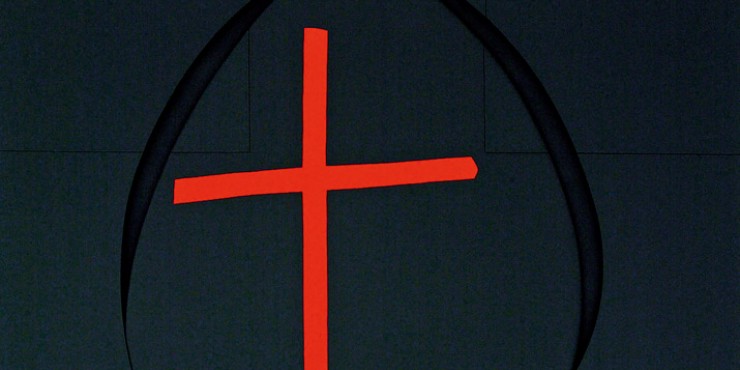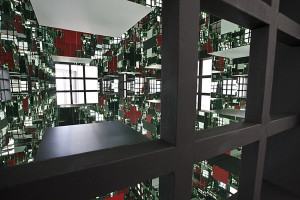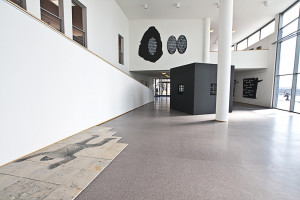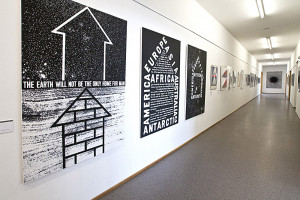
Since the early seventies Rudolf Sikora (1946) has stood out on the domestic art scene, reaching the international context through his original visual perception. His interest in the “state of the world” has formed the core of his work. Known for his numerous ecological activities, he viewed events on this planet and in his surroundings through the universe that served him as “a huge infinite or limited background in front of which I can evolve my earthly attitude to human endeavours”. Perceiving the workings of human society – its effect on terrestrial events and the environment – with a detached view, he did not drown in local problems, but tried to “see beyond the city boundaries”. His creative approach to these subjects rejected traditional art forms, preferring actions and conceptual projects.
Over the years, this global perspective has become more penetrating. What was previously concrete in symbols – exemplified in several series such as Topographies, Cross Sections of Civilisation, Dwellings, Question Marks, Exclamation Marks, or Out of Town – has transformed into the synthetic form. It evolves from the process of Sikora’s thinking – contemplation on existence. And it also changes his perspective. He no longer views the state of the world through the “satellite of the universe” in the contrast between Earth and Space.
This new process was signalled by the first pyramids, burial mounds and tombs – Crucified Tumulus, Suprematist’s Grave, Grave for Malevich and others.
Futurism, which along with Cubism set Malevich’s ideas of Suprematism in motion, was not only a dynamic element of time, but also an idea of the future, despite the fact that Malevich achieved the zero point with his elementariness. However, Sikora’s idea of decay resulting from the series of pyramids and graves creates an unusual context with the zero point. The internal link of Sikora’s interpretations or paraphrases is not primarily the question of interpretation of forms, but it is the question raised about the future. The connection of artistic creation with social life should not be confused with descriptive experiences and their formal representation. If Sikora sees objects in the future as a black wall, or a black hole, it can be classified as pessimism, or another form of the exclamation mark. Because too often we cried out forwards and in fact we went backwards. Alternatively, the future was not in the direction we walked, but somewhere else.
Sikora has again raised these questions in a brilliant polemic with Modernism and Postmodernism also in the recent period represented by exhibited works. The main object of the exhibition was the paraphrase of Malevich’s Black Square projected into the black cube, Prison for Malevich, with barred views. Inside it Sikora played a spectacular virtual game using mirrors, expressing the distance of Malevich’s “utopia” from the contemporary virtual world.
However, although he was regarded as the key figure of Conceptual art, the essential principles of Rudolf Sikora’s work did not turn away from the aesthetics of the picture and its visual impact.





















